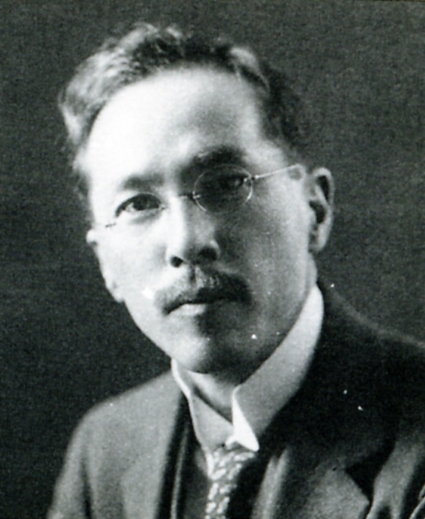- Ikuma Arishima
Infobox Writer
name = Ikuma Arishima

caption = Arishima Ikuma
birthdate = birth date|1882|11|26|df=y
birthplace =Yokohama ,Japan
deathdate =death date and age|1974|9|15|1882|11|26|df=y
deathplace =Kamakura, Kanagawa ,Japan
occupation = Writer, Artist
genre = short stories, novels, essays
movement =Shirakaba
notableworks =
influences =
influenced =nihongo|Ikuma Arishima |有島生馬| Arishima Ikuma|extra=
26 November 1882 -15 September 1974 was thepen-name of Arishima Mibuma, Japanese novelist and painter active in the Taishō andShowa period . He also used "Utosei" and then "Jugatsutei" as his alternative pen names.Early life
Ikuma was born in
Yokohama into a wealthy family as the son of an ex-samurai official in the Ministry of Finance. His older brother was the writer,Arishima Takeo , and his younger brother, the writer and painterSatomi Ton . He graduating from what has now become theTokyo University of Foreign Studies , where he specialized in theItalian language . After graduation, he studied Western-style painting underFujishima Takeji . He then went toEurope in 1905 to study painting and sculpture inItaly andFrance .Literary career
After Ikuma's return to Japan in 1910, he joined the "
Shirakaba " literary circle and participated in production of the first issue theirliterary magazine . He published new-style poems and short stories in the magazine, and used it as a vehicle to introduce the works of the French impressionist painterPaul Cézanne to the Japanese public.In 1913, he published his first
short story anthology, "Komori no gotoku" ("Like a Bat"), in which he exhibits a harmony between his intuition as a painter and his sensitivity as a poet. In 1914, he suggested the addition of a secondoil painting section to the Ministry of Education's annual Exhibition of Fine Arts, but this was turned down. Instead, he founded the "Nikakai" ("Second Division Society") Exhibition withIshii Hakutei andTsuda Seifu as a rival to the official government exhibition.In addition to his painting, he wrote novels, including "Nan-o no Hi" ("Days in Southern Europe") and "Uso no Hate" ("The End of a Lie"). He is also noted for his essay, "Bijutsu no Aki" ("Autumn of Fine Arts") and for translation of the recollections of Cezanne from French to Japanese.
Ikuma lived in his father's cottage at Kamakura,
Kanagawa prefecture from 1893 to 1895; then took up residence in Kamakura permanently from 1920 until his death in 1974. His grave is at the Kamakura Reien Cemetery.His house at
Inamuragasaki , Kamakura has been physically moved to Shinano-Shinmachi inNagano prefecture , where is now houses the Arishima Ikuma Memorial Museum.ee also
*
Japanese literature
*List of Japanese authors
*List of Japanese artists References
* Weisenfeld, Gennifer. "MAVO: Japanese Artists and the Avant-Garde, 1905-1931". University of California Press (2001). ISBN-10: 0520223381
External links
*cite web|url=http://www.city.kamakura.kanagawa.jp/english/bunjin/arishimaikuma_e.htm
title=Arishima Ikuma
work=Literary Figures of Kamakura* cite web|url=http://www.ne.jp/asahi/shinmachi/museum/
title=Arishima Ikuma Memorial Museum
language=Japanese
Wikimedia Foundation. 2010.
